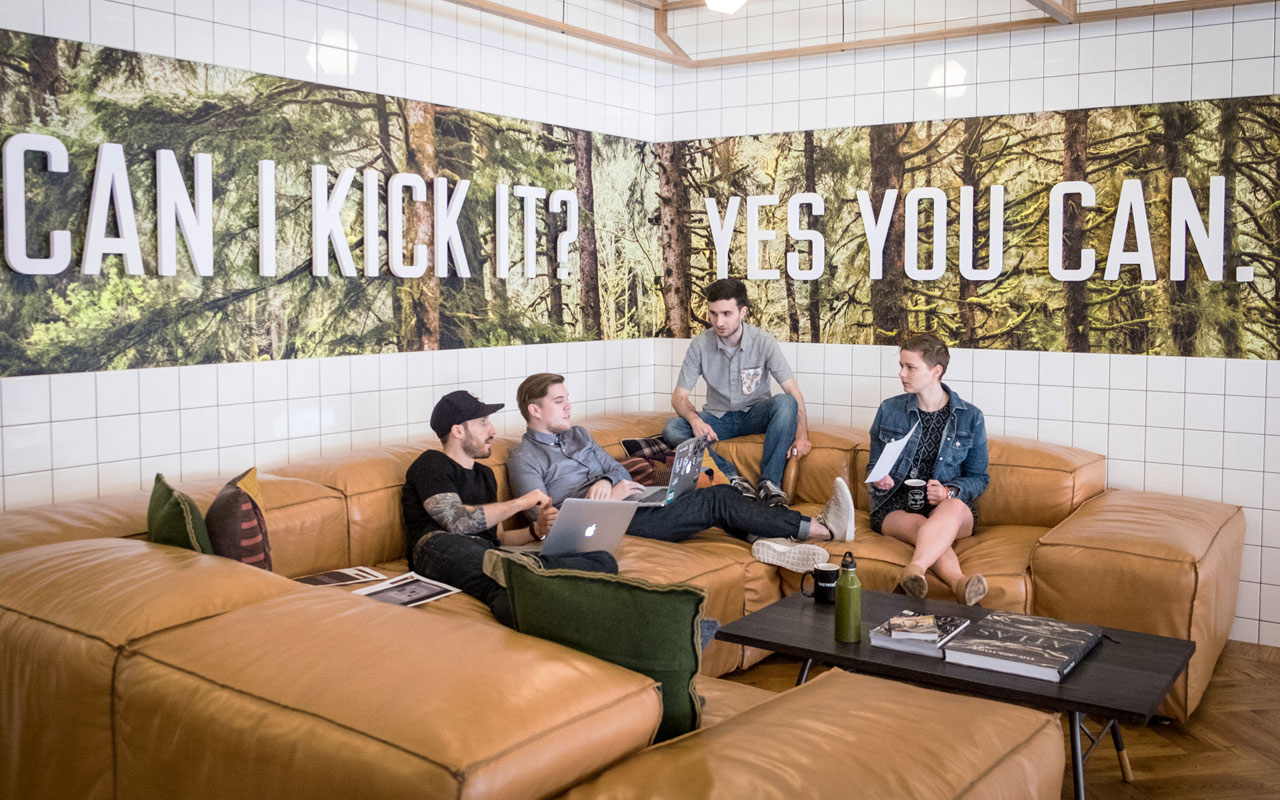Why Are B2B Brands Acting Like B2C?

A world of always-on consumers has forced B2B brands to break their old habits and take a few pages out of the B2C playbook. Now, there’s not so much of a division between how B2B and B2C brands present themselves in the public eye.
It used to be that all the cool brand marketing was happening in the B2C space. The B2B folks were the wallflowers, content standing off to the side, watching comfortably from their niche.
But eventually, those walls closed in, with the digital revolution providing the bulk of the pushing. A world of always-on consumers has forced B2B brands to break their old habits and take a few pages out of the B2C playbook. Now, there’s not so much of a division between how B2B and B2C brands present themselves in the public eye. The B2Bs are right there elbow-to-elbow with the B2Cs in the middle of the dance floor. And their moves are getting smoother.
B2C Experiences are Shaping Expectations for B2B
What the digital revolution has most starkly changed is how consumers behave and what types of content and experiences they expect from the brands they interact with. Personalization, relevancy, curation: there are the types of things consumers now crave, and B2C brands were quicker to adopt branding and marketing that better served these interests.
However, these consumer behavior changes didn’t only affect people who were buying consumer goods. Prospective buyers of B2B services also wanted seamless, omnichannel experiences, content relevant to their interests, and to do business with brands with whom they shared a cultural connection with. Brands who were speaking the same language as they were.
Now, the line between how a typical B2C brand markets and how some B2B brands market isn’t just blurred….it’s basically invisible. A B2B brand is just as likely as any of its B2C counterparts to push its, say, company culture to the forefront, or to position itself as a lifestyle brand. As an example, take WeWork.
Can wework Kick It? Yes, They Can
WeWork needed to make its mark in a very competitive and unsexy landscape, the world of New York City commercial real estate. However, any operations professional who has ever looked for office space knows that it can be a slog—and for small businesses and startups, the process can be particularly galling when costs are considered.
The best visionary can look at a bland, empty room and design a hip, collaborative, employee-centric workplace, but getting there isn’t cheap or easy. Every startup wants to give their employees the experience of working at Google or Facebook but doesn’t exactly have the resources to make that a reality.

Enter WeWork, where startups can seamlessly set up shop and have the ability to offer the same perks that the most employer-friendly offices boast. A sleek, clean look, snacks and drinks on hand, a collaborative environment—WeWork has succeeded because it offers more than just a product or service, but an experience.
It’s speaking the same language as its target audience, a conversation that sounds very much like the one B2C companies are having with individual consumers. Offering a curated, personalized, premier customer experience that used to be thought of as the realm of fashion, cars, and consumer products is now the way B2B companies are positioning themselves…to great success thus far.
While WeWork is proliferating—they are more than just office spaces now, dipping their toes into education and housing, too—they are still a relatively smaller operation, not too far removed from being a startup themselves.
One could be forgiven for thinking that focusing on culture and lifestyle is great for smaller, more nimble B2B brands. But should entrenched, enterprise-level behemoths take the chance of recalibrating their brand marketing to look, sound, and feel more like a B2C brand?
In the End, We’re All Human. And Humans Make the Purchase Decisions
One big B2B company who is mastering content-, conversation-, and lifestyle-driven brand marketing is Adobe. Adobe products help power some of the world’s biggest companies. Adobe needs those other big behemoths to buy their services to succeed. However, looking at Adobe’s brand marketing unveils a truth that seems obvious but isn’t often voiced—the target of B2B marketers may be businesses, but it’s human beings that make those purchasing decisions. Those human beings are consumers like the rest of us.
Adobe utilizes its social channels to push blog content that is geared towards the individual creative. The company also uses activation and event marketing to amplify its culture, currently making its presence felt at the Sundance Film Festival. This type of ground game can help Adobe sell its products to individuals, but more importantly, it presents the company as a champion of creativity, one that every big enterprise not just wants to have a relationship with… but needs to have a relationship with.
Some entrenched B2B companies might very well feel that embodying a lifestyle, promoting culture, and entering cultural conversations is a waste of time. What good does that do companies in logistics, security, or supply chain? Those big companies who want to stay stop their market need to understand that their potential clients are consumers too, consumers used to the intimate relationships that the most successful brands build.
Consumers want a seamless, personal experience, and they want their eventual choice of brand and product to say something about themselves. Their choice becomes part of their identity. They choose brands who speak their language, who stand for something, who are more than just the product or service they provide. Their premium experiences on the B2C side have shaped their purchase expectations for B2B, and this is a trend we don’t see going away any time soon.
B2B brands would do well to take note and up their game. It’s time to get off the sidelines and dial up the dance moves.
If this article helped you, please help us by sharing it or recommending to a friend. Thank you!


